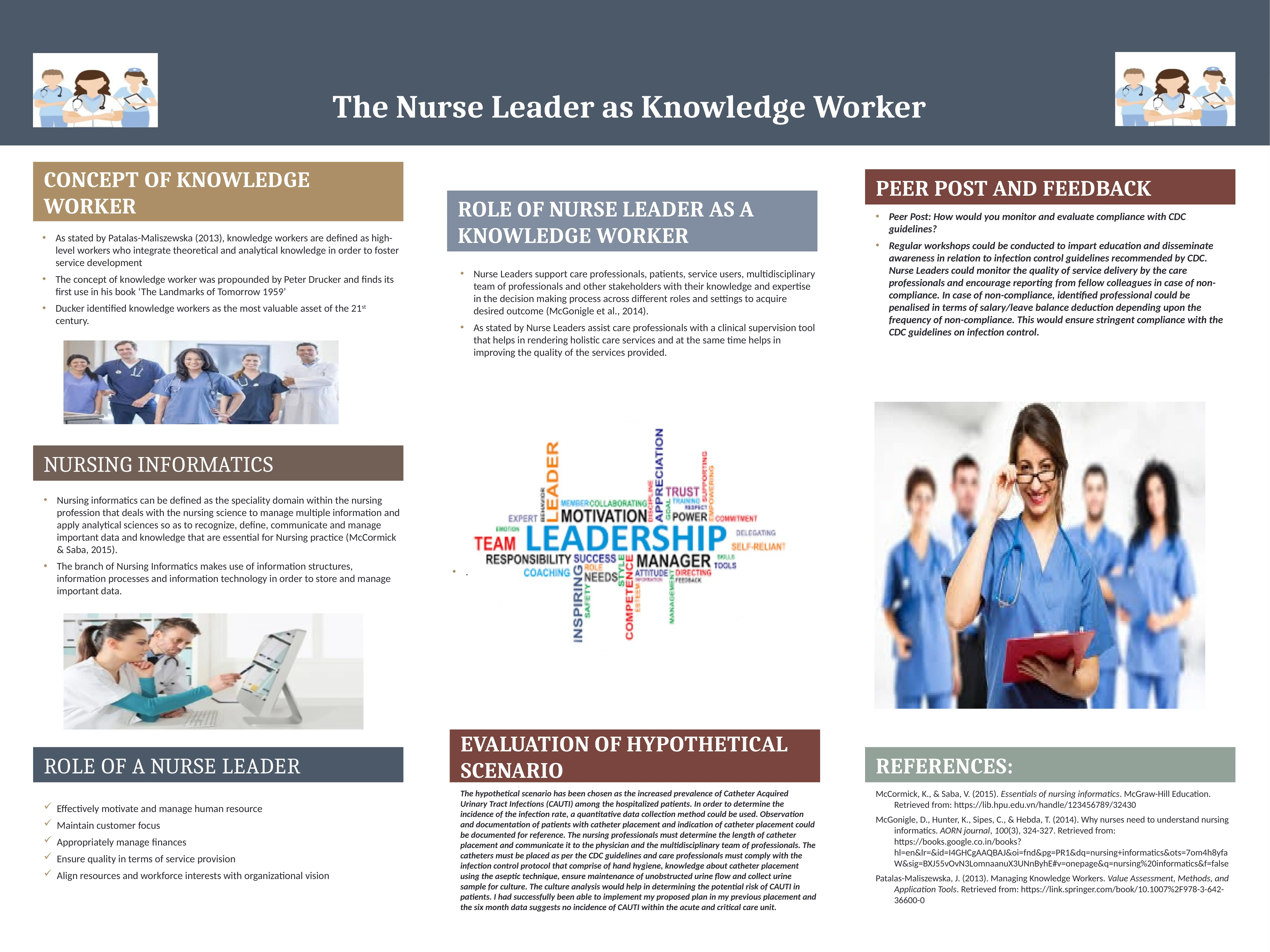Assignment: The Nurse Leader as Knowledge Worker - Nursing Informatics
VerifiedAdded on 2022/12/30
|1
|689
|74
Report
AI Summary
This assignment examines the concept of the nurse leader as a knowledge worker, as defined by Peter Drucker, and its application within nursing informatics. It explores the role of nurse leaders in supporting care professionals, patients, and multidisciplinary teams through their knowledge and expertise. The assignment includes a discussion of nursing informatics, the role of a nurse leader, and a hypothetical scenario involving Catheter Acquired Urinary Tract Infections (CAUTI), including data collection methods and adherence to CDC guidelines. The solution also incorporates peer feedback on monitoring and evaluating compliance with CDC guidelines, emphasizing the importance of education, monitoring, and potential penalties for non-compliance to ensure stringent adherence to infection control protocols.



![[object Object]](/_next/static/media/star-bottom.7253800d.svg)